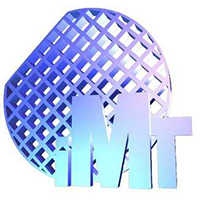Contact
Dr. Alexandru Müller
alexandru.muller@imt.ro
IMT-Bucharest (National Institute for Research and Development in Microtechnologies), coordinated by the Romanian Ministry of Education and Research, is the first institute with this profile in Eastern Europe and the main actor in microtechnologies in Romania. There are more than 100 people involved in research activities. Mission: research and development in micro- and nanotechnologies, technology transfer, education and training, dissemination; strategic role: pole of multidisciplinary research, integrating research, education and technology transfer, emerging as a regional centre. Research laboratories: Nanotechnologies, Microsystems for Bio-medical applications, Micro- and Nano-photonics, Micromachined microwave and millimeter wave circuits, Computer-aided simulation and modelling, Microphysical characterization, reliability. Participation in FP7 relevant to this project are MIMOMEMS (lead by IMT) , NANOTEC and SMARTPOWER; ENIAC projects: MERCURE , NANOCOM, NANORF. The relevant research of Laboratory of Micromachined microwave and millimeter wave circuits: IMT-Bucharest has an unique expertise in RF MEMS and carbon-based electronics. IMT is promoting the field of Membrane supported millimeter wave circuits since 1996 and carbon-based electronics since 2007. The “Laboratory of micromachined microwave circuits” is also a national Center of Excellence in RF MEMS. The scientists from this group have published an important number of high-quality papers in the area of carbon nanotubes, graphene and 2D materials-based devices.We have researched and fabricated with FORTH Heraklion or alone a long series of RF carbon nanotube devices ( waveguides, amplifiers, resonators, memristors, biosensors) Also, we have fabricated for the first time with FORTH Heraklion microwave graphene devices (waveguides, FETs, multipliers, and demodulators) demonstrating how much the microwave devices are enhance using graphene. The first results for microwave devices using other 2D materials were published starting 2014.
Resources:
“On wafer” measurement system in the 0.1 – 110 GHz range (microwave network analyser from Anristu with SUSS Microtec Probe Station); frequency synthesizer (Agilent) up to 110 GHz; Spectrum Analyser (Anritsu) up to 110 GHz; Tektronix digital serial analyser up to 50 GHz with TDR module; Keithley Semiconductor characterization system; optical profiler WLI – Photomap 3D from Fogale; millimetre wave power-meter in the 0.1 – 40 GHz range; cryostat-based measurement system in the 5 – 500 K range (microwave measurements up to 15 GHz, including on wafer measurements are available); computers and software for electromagnetic simulations (IE3D, Fidelity, CST, and Comsol software packages); nanolithography equipment, AFM, white light interferometer (Fogale) mask manufacturing facilities.
Role in NanoSmart:
IMT will lead Work Package 4 on test and measurement activity:
- Design and develop (fabricate and characterize the 2D material sensors)
- Design and develop (characterize) the reconfigurable filter.
- Design integrated circuits (RF engineering)
- Perform DC and microwave characterization, at the component level, of all FET devices.
IMT will also be involved in the design and modelling (Work Package 2) of other components.
Key personnel:
Dr. Mircea Dragoman (male) received the MSc in electronics from Polytechnical Institute of Bucharest, Romania in 1980 and the PhD degree in 1991. He is a principal researcher at IMT- Bucharest. He was a visiting professor at Univ. Duisburg, Mannheim, Frankfurt and Darmstadt, Germany, Tor Vergata University, Rome, Italy, Univ. Saint-Etienne and Toulouse, France. He is the author of 252 papers (in journals and proceedings of conferences, 135 are ISI ranked journals) in the area of microwave, millimeter-wave, terahertz, RF-MEMS, and nanoelectronics. He is the co-author of the following books: Advanced Optoelectronic Devices (Springer, 1999, 2011), Optical Characterization of Solids (Springer, 2002), Quantum – Classical Analogies (Springer, 2003) and Nanoelectronics (Artech House, 2006, 2009), Bionanoelectronics (Springer, 2012). His current research interests are nanodevices based on CNs, graphene and other 2D materials, RF-MEMS and terahertz electronics. He is the recipient of the 1991 Alexander von Humboldt Fellowship, and the 1999 Romanian Academy Prize “Gh. Cartianu”. He has participated in the following EU projects MEMSWAVE (nominated for Descartes prize) and AMICOM.
Dr. Martino Aldrigo (male) obtained the MSc degree in Telecommunication Engineering (summacum laude) from the University of Bologna, Italy, in 2009. In 2014 he obtained the PhD in Electronics Engineering, Telecommunications and Information Technology from the University of
Bologna. Since January 2014 he is employed as researcher (now Research Scientist III) at Lab4 of the National Institute for Research and Development in Microtechnologies in Bucharest, Romania. His main expertise comprises the electromagnetic simulations and measurements of RF/MW/THz devices based on nano-materials.
Dr. Alexandru Müller (male) graduated the University of Bucharest, Faculty of Physics in 1972; PhD degree in Semiconductor Physics in 1990. As a senior scientist at IMT-Bucharest, his main research areas are micromechanics on silicon and GaAs, design and manufacturing of microwave circuits supported on FP7-ICT-2011-8 thin dielectric membranes, membrane supported millimetre wave filters, antennas and receiver modules. Dr. Müller coordinated the FP4 Project “MEMSWAVE – Micromachined Circuits for Microwave and MillimetreWave Applications”, nominated among the first 10 European research projects at the 2002 call for the DESCARTES prize of the EC. He also has coordinates bilateral cooperation projects with: LAAS-CNRS Toulouse, FORTH-IESL-MRG Heraklion, ITC-IRST Trento and the Romanian team in “AMICOM” FP6 NoE in RF-MEMS (2004-2007). He is the author of more than 75 papers published in journals and Conference Proceedings and also co-author in 6 books. In 2002, he was awarded with the “Tudor Tanasescu” Prize of the Romanian Academy.
Dr. Alexandra Raluca Stefanescu (female) graduated from Politehnica University of Bucharest,
Faculty of Electrical Engineering, in 2006 and obtained her PhD in 2010. She participated as a team member in several national and European projects (FP6, FP7, ENIAC). She worked in the frame of the FP7 MIMOMEMS project where she was involved in RF-MEMS technologies. Between 2010 and 2012 she conducted post-doctoral research funded by the EU (structural funds, POSDRU/89/1.5/S/63700) where her main work was focused on the numerical analysis and experimental development of surface acoustic wave (SAW) and bulk acoustic wave resonators (FBAR) on WBG semiconductors (GAN). Her current research activities focus on acoustic devices
on WBG materials working as sensors, as well as on electromagnetic simulation of RF MEMS switches for K to W band.
Dr. Dan Neculoiu (male) graduated the Polytechnical Institute of Bucharest, Faculty of Electronics in 1985; PhD degree in 1997. As a senior scientist at IMT-Bucharest, his main research areas are the electromagnetic simulations for the design and modelling of microwave circuits, membrane supported millimetre wave filters, antennas and receiver modules. He participated in the FP4 Project “MEMSWAVE” and in FP6 NoE in RF-MEMS “AMICOM”. Dr. Neculoiu has coordinated a Brancusi project (2003) and has participated in two IMPACT projects (2001-2002) financed by EC, with LAAS-CNRS. He is the author of more than 100 papers published in journals and Conference Proceedings in the area of RF-MEMS. Dr. Dan Neculoiu is also full professor at the “Politehnica” University Bucharest.
Dr. Alina-Cristina Bunea (female) received the BSc (2009), MSc (2011) and PhD (2016) degrees from the “Politehnica” University of Bucharest, Romania. She is currently working as a Research Scientist III at IMT Bucharest, where she is involved in the design, 3D electromagnetic modeling and characterization of passive and active microwave circuits. Her interests include: millimeter wave micromachined circuits, LTCC circuits, as well as the design and characterization of graphenebased microwave devices.

